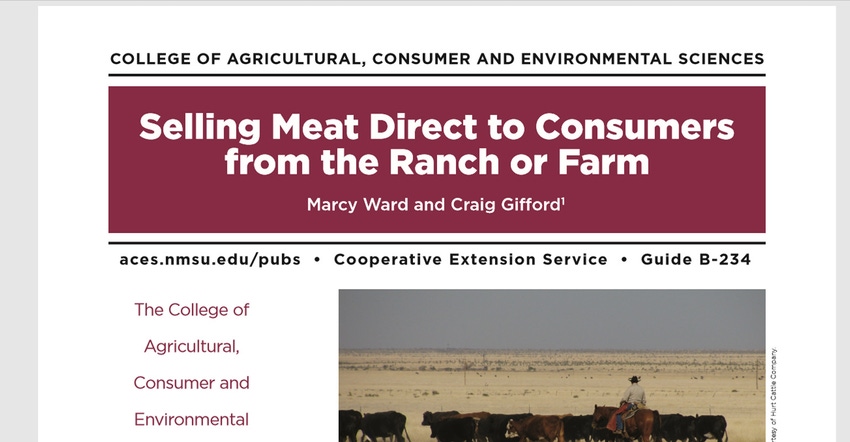May 28, 2020

Prior to the COVID-19 crisis, restaurants and food service companies represented approximately 54% of food consumed in the United States, according to the U.S. Department of Agriculture. But in the last three months, that has all changed.
“In the immediate aftermath of the epidemic outbreak, with the closure of restaurant businesses and school meal services, bulk product deliveries dropped by an estimated 60%,” said Craig Gifford, New Mexico State University Extension beef cattle specialist. “Meat processors have been unable to adapt quickly to the change in demand for smaller packaging and increased delivery to retail outlets. As a result, meat shelves have become bare in some areas."
To compound the issue, several large processing facilities have been closed due to plant employees testing positive for COVID-19.
The unstable supply chain has caused a dramatic drop in the market value of live animals, milk and grain products.
“In order for cattle producers to weather the storm, they are looking for alternative ways to market their beef,” said Marcy Ward, NMSU Extension livestock specialist.
To help consumers and producers navigate this crisis, NMSU Cooperative Extension Service is providing research-based information through their guide, “Selling Meat Direct to Consumers from the Ranch and Farm.” The publication provides alternative ways for producers to market beef cattle.
“This publication provides information that will help both producers and their customers become educated in direct beef sales from the ranch or farm,” Ward said, who co-authored the publication with Gifford.
“It provides meat marketing options and aspects of each option to be considered. It also provides a scenario for calculating the price of the animal to best match retail prices, and maximize the profit per animal.”
The publication is available on NMSU College of ACES website at https://aces.nmsu.edu/pubs/_b/B234.pdf.
Source: is NMSU, which is solely responsible for the information provided and is wholly owned by the source. Informa Business Media and all its subsidiaries are not responsible for any of the content contained in this information asset.
About the Author(s)
You May Also Like




